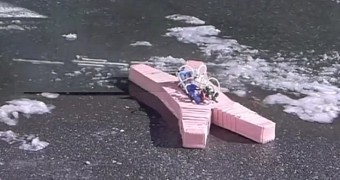We've seen many robots in our time, and we're pretty sure some really incredible ones came before our time too, whether or not people heard about them. Now, though, we might have to redefine some preconceptions.
You see, popular and not so popular media has portrayed the greatest robotic life forms as either humanoid in appearance or as some sort of alien ship or automaton.
It has now become apparent that the world's strongest robot, the most enduring robotic contraption, has nothing in common with those views.
Indeed, we may safely say that the robot in question, which was invented by a team of scientists from Harvard, looks more like a starfish than anything else.
The strongest robot in the world
It is made of rubber, if you can believe it. Also, it's not so much a starfish as some sort of unholy object with two rubbery, pseudopod-like appendages on both sides. It was invented by a team led by Harvard University researcher Michael Tolley.
The robot proved capable of walking through a snowstorm with temperatures of -9 °C / 15.8 °F, crawl through flames for 20 seconds without taking any damage, and even survive water and acids without problem.
Sure, there are certain corrosive substances out there, or in labs, that would eat through the rubbery material, but the bot has mostly shown itself to be nearly impervious to any naturally occurring disaster.
And if you were worried about its ability to withstand physical trauma, never fear. The Harvard team started a car and ran their robot over.
The catch
Only the body of the robot was tested. The contraption doesn't actually have a chance to stay functional in similarly hostile real world scenarios, because the electronics are on the outer side of it.
However, it is the belief of the robot's inventors that embedding the electronics inside the soft body should be easy enough to do for future prototypes.
Plans for the robot
While mostly a proof of concept, the robot is supposed to be a starting point for search and rescue robots, where their flexible body (there is no rigid skeleton, you see) can let them go through tight spaces. Currently, the battery lasts for 2 hours, but this should improve over time, like everything else.
Giving the bot the ability to jump, slither, and grasp delicate objects is the next step. After that, we'll have to wait and see.

 14 DAY TRIAL //
14 DAY TRIAL // 